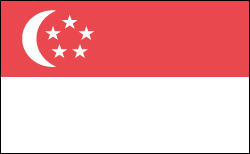SINGAPORE

Geography
The Republic of Singapore consists of the main island of Singapore, off the southern tip of the Malay Peninsula between the South China Sea and the Indian Ocean, and 58 nearby islands.Government
Parliamentary republic.History
Inhabitants of the Malaysian peninsula and the island of Singapore first migrated to the area between 2500 and 1500 B.C. ( see Malaysia). British and Dutch interest in the region grew with the spice trade, and the trading post of Singapore was founded in 1819 by Sir Stamford Raffles. It was made a separate Crown colony of Britain in 1946, when the former colony of the Straits Settlements was dissolved. The other two settlements on the peninsula—Penang and Malacca—became part of the Union of Malaya, and the small island of Labuan was transferred to North Borneo. The Cocos (or Keeling) Islands and Christmas Island were transferred to Australia in 1955 and in 1958, respectively.Singapore attained full internal self-government in 1959, and Lee Kwan Yew, an economic visionary with an authoritarian streak, took the helm as prime minister. On Sept. 16, 1963, Singapore joined Malaya, Sabah (North Borneo), and Sarawak in the Federation of Malaysia. It withdrew from the federation on Aug. 9, 1965, and a month later proclaimed itself a republic.
Under Lee, Singapore developed into one of the cleanest, safest, and most economically prosperous cities in Asia. However, Singapore's strict rules of civil obedience also drew criticism from those who said the nation's prosperity was achieved at the expense of individual freedoms.
S. R. Nathan was declared president without an election when he was certified as the only candidate eligible to run in 1999 elections. In Aug. 2004, Lee Hsien Loong became the country's third prime minister since Singapore gained independence from Britain in 1965. Lee faced his first electoral challenge in May 2006. His People's Action Party (PAP) won 82 out of 84 seats in parliamentary elections.



0 Comments:
Post a Comment
Subscribe to Post Comments [Atom]
<< Home